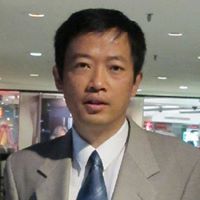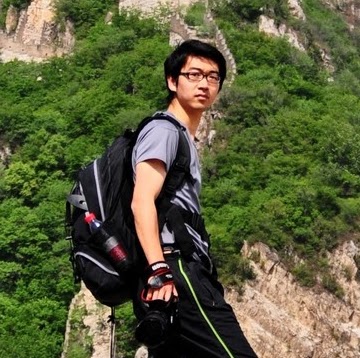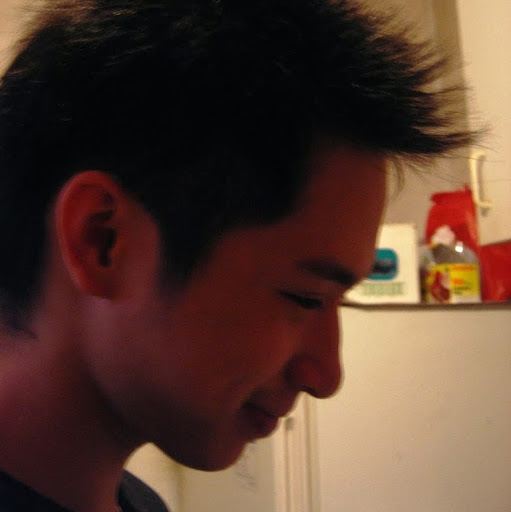Feng Liu
age ~50
from Valley Center, CA
- Also known as:
-
- Fen G Liu
- Feng Lin
- Li N Feng
Feng Liu Phones & Addresses
- Valley Center, CA
- Waunakee, WI
- Fitchburg, WI
- 1921 The Alameda APT 6, San Jose, CA 95126
- Minneapolis, MN
- Ankeny, IA
- Ames, IA
- Rolla, MO
Us Patents
-
Chemical Mechanical Planarization Of Low Dielectric Constant Materials
view source -
US Patent:6416685, Jul 9, 2002
-
Filed:Apr 11, 2000
-
Appl. No.:09/547187
-
Inventors:Fan Zhang - Sunnyvale CA
Feng Liu - Sunnyvale CA
Dan Towery - Santa Clara CA -
Assignee:Honeywell International Inc. - Morristown NJ
-
International Classification:C09K 1300
-
US Classification:252 791
-
Abstract:The present invention relates to apparatus, procedures and compositions for avoiding and reducing damage to low dielectric constant materials and other soft materials, such as Cu and Al, used in fabricating semiconductor devices. Damage reduction can be achieved by decreasing the role of mechanical abrasion in the CMP of these materials and increasing the role of chemical polishing, which can also improve material removal rates. Increasing the role of chemical polishing can be accomplished by creating a polishing slurry, which contains components that interact chemically with the surface to be polished. This slurry may or may not also contain soft abrasive particles, which replace the hard abrasive particles of conventional slurries. Use of soft abrasive particles can reduce the role of mechanical abrasion in the CMP process. Use of this slurry in CMP can reduce surface scratches and device damage.
-
Low Dielectric Constant Materials With Polymeric Networks
view source -
US Patent:6423811, Jul 23, 2002
-
Filed:Jul 19, 2000
-
Appl. No.:09/619237
-
Inventors:Kreisler S. Lau - Sunnyvale CA
Feng Quan Liu - Cupertino CA
Boris Korolev - San Jose CA
Emma Brouk - San Jose CA
Ruslan Zherebin - Daly City CA
David Nalewajek - West Seneca NY -
Assignee:Honeywell International Inc. - Norristown NJ
-
International Classification:C08G 802
-
US Classification:528125, 528127, 528170, 528205, 528220, 528397, 528401
-
Abstract:A low dielectric constant material has a polymeric network that is fabricated from a first and a second component. The first component comprises a polymeric strand, and the second component comprises a molecule having a central portion with at least three arms extending from the central portion, wherein each of the arms includes a backbone with a reactive group. The first component and the second component form the polymeric network in a reaction that involves at least one of the reactive groups when the first and second components are thermally activated. Contemplated low dielectric constant materials are advantageously employed in the fabrication of electronic devices, and particularly contemplated devices include integrated circuits.
-
Compositions And Methods For Thermosetting Molecules In Organic Compositions
view source -
US Patent:6469123, Oct 22, 2002
-
Filed:Jul 19, 2000
-
Appl. No.:09/618945
-
Inventors:Kreisler S. Lau - Sunnyvale CA
Feng Quan Liu - Cupertino CA
Boris A. Korolev - San Jose CA
Emma Brouk - San Jose CA
Ruslan Zherebin - Daly City CA
David Nalewajek - West Seneca NY -
Assignee:Honeywell International Inc. - Morristown NJ
-
International Classification:C08G 6378
-
US Classification:528 86, 528205, 528207, 528208, 528211, 525132, 525149, 525152, 525168, 525177
-
Abstract:In a method of producing a low dielectric constant polymer, a thermosetting monomer is provided, wherein the thermosetting monomer has a cage compound or aryl core structure, and a plurality of arms that are covalently bound to the cage compound or core structure. In a subsequent step, the thermosetting monomer is incorporated into a polymer to form the low dielectric constant polymer, wherein the incorporation into the polymer comprises a chemical reaction of a triple bond that is located in at least one of the arms. Contemplated cage compounds and core structures include adamantane, diamantane, silicon, a phenyl group and a sexiphenylene group, while preferred arms include an arylene, a branched arylene, and an arylene ether. The thermosetting monomers may advantageously be employed to produce low-k dielectric material in electronic devices, and the dielectric constant of the polymer can be controlled by varying the overall length of the arms.
-
Polarization Splitter And Combiner And Optical Devices Using The Same
view source -
US Patent:6493140, Dec 10, 2002
-
Filed:Oct 14, 1999
-
Appl. No.:09/418136
-
Inventors:Wei-Zhong Li - San Jose CA
Yanfeng Yang - Sunnyvale CA
Feng Liu - Sunnyvale CA
Wei Luo - Chicago IL -
Assignee:Oplink Communications, Inc. - San Jose
-
International Classification:G02B 2728
-
US Classification:359495, 359494, 359497, 385 27, 385 33
-
Abstract:A polarization splitter and combiner for processing a beam containing a first polarization and a second polarization to spatially separate these polarizations by using a birefringent element for receiving the beam and walking off the first polarization from the second polarization by an initial walk-off distance. A first lensing element with an optical axis is oriented to admit the first polarization at a first input point and output the first polarization at a first output angle to the optical axis and the second polarization at a second output angle to the optical axis. A second lensing element positioned after the first lensing element is oriented to receive the polarizations at input angles equal to their respective output angles, and outputs both polarizations at a first and second output point respectively. In a symmetrical arrangement, the first and second output points are separated by the initial walk-off distance. Additional walk-off control elements and optics can be interposed between the first and second lensing elements, depending on the functionality of the beam splitter and combiner or optical device employing the same.
-
Low Dielectric Constant Organic Dielectrics Based On Cage-Like Structures
view source -
US Patent:6509415, Jan 21, 2003
-
Filed:Apr 7, 2000
-
Appl. No.:09/545058
-
Inventors:Kreisler Lau - Sunnyvale CA
Feng Quan Liu - Cupertino CA
Boris Korolev - San Jose CA
Emma Brouk - Santa Clara CA
Rusian Zherebin - Daly City CA
Roger Leung - San Jose CA -
Assignee:Honeywell International Inc. - Morristown NJ
-
International Classification:C08F28100
-
US Classification:525132, 525149, 525152, 525168, 525177, 525534, 525539
-
Abstract:A low dielectric constant material has a first backbone with an aromatic moiety and a first reactive group, and a second backbone with an aromatic moiety and a second reactive group, wherein the first and second backbones are crosslinked via the first and second reactive groups in a crosslinking reaction without an additional crosslinker, and wherein a cage structure having at least 10 atoms is covalently bound to at least one of the first and second backbone.
-
Low Dielectric Constant Materials With Polymeric Networks
view source -
US Patent:6713590, Mar 30, 2004
-
Filed:Dec 3, 2001
-
Appl. No.:10/004584
-
Inventors:Kreisler S. Lau - Sunnyvale CA
Feng Quan Liu - Cupertino CA
Boris Korolev - San Jose CA
Emma Brouk - San Jose CA
Ruslan Zherebin - Daly City CA
David Nalewajek - West Seneca NY -
Assignee:Honeywell International Inc. - Morristown NJ
-
International Classification:C08G 802
-
US Classification:528125, 528127, 528170, 528205, 528220, 528397, 528401
-
Abstract:A low dielectric constant material has a polymeric network that is fabricated from a first and a second component. The first component comprises a polymeric strand, and the second component comprises a molecule having a central portion with at least three arms extending from the central portion, wherein each of the arms includes a backbone with a reactive group. The first component and the second component form the polymeric network in a reaction that involves at least one of the reactive groups when the first and second components are thermally activated. Contemplated low dielectric constant materials are advantageously employed in the fabrication of electronic devices, and particularly contemplated devices include integrated circuits.
-
Chemical Mechanical Planarization Of Low Dielectric Constant Materials
view source -
US Patent:6736992, May 18, 2004
-
Filed:May 14, 2002
-
Appl. No.:10/145649
-
Inventors:Fan Zhang - Mountain View CA
Feng Liu - Cupertino CA
Dan Towery - Santa Clara CA -
Assignee:Honeywell International Inc. - Morristown NJ
-
International Classification:C09K 1300
-
US Classification:252 791
-
Abstract:The present invention relates to apparatus, procedures and compositions for avoiding and reducing damage to low dielectric constant materials and other soft materials, such as Cu and Al, used in fabricating semiconductor devices. Damage reduction can be achieved by decreasing the role of mechanical abrasion in the CMP of these materials and increasing the role of chemical polishing, which can also improve material removal rates. Increasing the role of chemical polishing can be accomplished by creating a polishing slurry, which contains components that interact chemically with the surface to be polished. This slurry may or may not also contain soft abrasive particles, which replace the hard abrasive particles of conventional slurries. Use of soft abrasive particles can reduce the role of mechanical abrasion in the CMP process. Use of this slurry in CMP can reduce surface scratches and device damage.
-
Method And Apparatus For Face-Up Substrate Polishing
view source -
US Patent:6776693, Aug 17, 2004
-
Filed:Jun 4, 2002
-
Appl. No.:10/163796
-
Inventors:Alain Duboust - Sunnyvale CA
Liang-Yuh Chen - Foster City CA
Yan Wang - Sunnyvale CA
Siew Neo - Santa Clara CA
Lizhong Sun - San Jose CA
Feng Q. Liu - Cupertino CA -
Assignee:Applied Materials Inc. - Santa Clara CA
-
International Classification:B24B 100
-
US Classification:451 41, 451 5, 451 36, 451 60, 451286, 451289, 451397, 451398, 204224 M, 205662
-
Abstract:A method and apparatus are provided for polishing a substrate surface. In one aspect, an apparatus for polishing a substrate includes a basin and a polishing head. A carrier is disposed in the basin and has a substrate supporting surface. A retaining ring is disposed on the carrier and at least partially circumscribes the substrate supporting surface. The polishing head is supported above the basin and includes a conductive polishing pad. Embodiments may further include a vent to allow gas to escape through the polishing head. Embodiments may further include an electrolyte supply that flows electrolyte into the polishing head and out through a permeable electrode and the conductive pad to the substrate. Embodiments may also be configured with a polishing head diameter smaller than the substrate supported by the carrier.
Name / Title
Company / Classification
Phones & Addresses
Functional Electric
Electric Contractors
Electric Contractors
2 Marrington Road, Winnipeg, MB R3T 5X4
(204)9970669
(204)9970669
President
DONATA YOUNG FOUNDATION
Membership Organizations, Nec, Nsk
Membership Organizations, Nec, Nsk
2305 Vis Del Mar, San Mateo, CA 94404
President
VISTA DESTINY, INC
Business Services at Non-Commercial Site
Business Services at Non-Commercial Site
2305 Vis Del Mar, San Mateo, CA 94404
Principal
Mechliu Inc
Engineering Services
Engineering Services
13492 Chelly Ct, San Diego, CA 92129
Principal, President
Dld Destiny
Nonclassifiable Establishments
Nonclassifiable Establishments
2305 Vis Del Mar, San Mateo, CA 94404
President
Ying Foods Company
23811 Washington Ave, Murrieta, CA 92562
President
GENERAL OPTRONICS CORPORATION
21845 Granada Ave, Cupertino, CA 95014
President
ELEGANT HOTEL MANAGEMENT CORPORATION
4480 Enterprise St STE A-4, Fremont, CA 94538
Resumes

Feng Liu San Ramon, CA
view sourceWork:
Western Digital Corporation
2009 to 2000
Hard Disk Drive Writer Head Design and Technology Lead Western Digital Corporation
2007 to 2000
Senior Principal Engineer Western Digital Corporation
2007 to 2009
Hard Disk Drive Read Head Technology/Reliability Lead Seagate Technology
Minneapolis, MN
1997 to 2007
Senior Staff Engineer Seagate Technology
2003 to 2005
HDD (Timberland/Firebird) development
2009 to 2000
Hard Disk Drive Writer Head Design and Technology Lead Western Digital Corporation
2007 to 2000
Senior Principal Engineer Western Digital Corporation
2007 to 2009
Hard Disk Drive Read Head Technology/Reliability Lead Seagate Technology
Minneapolis, MN
1997 to 2007
Senior Staff Engineer Seagate Technology
2003 to 2005
HDD (Timberland/Firebird) development
Education:
University of Minnesota, Twin Cities
Minneapolis-Saint Paul, MN
1998 to 2003
MS/PhD program in Electrical and Computer Engineering Washington State University
Pullman, WA
1994 to 1997
MS/PhD program in Chemical Engineering Tianjin University
1988 to 1992
BS in Chemical Engineering
Minneapolis-Saint Paul, MN
1998 to 2003
MS/PhD program in Electrical and Computer Engineering Washington State University
Pullman, WA
1994 to 1997
MS/PhD program in Chemical Engineering Tianjin University
1988 to 1992
BS in Chemical Engineering
Skills:
Data storage devices and system, hard disk drive reader/writer design, magnetic recording technology, non-volatile memory, such as spin transfer torque (STT) magnetoresistive random-access memory (MRAM), and semiconductor/magnetic thin film wafer process modules and integration, hard disk drive components and hardware system design, testing, reliability, integration to manufacturing; extensive project managements and time to market product execution
Classmates

Li Ming High School, Shan...
view sourceGraduates:
Feng Liu (1992-1996),
Mei Jielin (2000-2004),
Liu Ming (1987-1991),
Jianbing Jianbing (1983-1987)
Mei Jielin (2000-2004),
Liu Ming (1987-1991),
Jianbing Jianbing (1983-1987)

Madrone High School, San ...
view sourceGraduates:
Bryan Faulkner (1984-1988),
feng Liu (1984-1988),
Mel Domstad (1977-1981),
Zane Cresse (1991-1995),
L Smith (1973-1977)
feng Liu (1984-1988),
Mel Domstad (1977-1981),
Zane Cresse (1991-1995),
L Smith (1973-1977)

Queensborough Community C...
view sourceGraduates:
LI Feng Liu (2003-2005),
Brunhilda Zielinski (1967-1972),
Richard Salmon (1983-1986),
Urania Vlavianos (1974-1978),
Andre Ramirez (1985-1985)
Brunhilda Zielinski (1967-1972),
Richard Salmon (1983-1986),
Urania Vlavianos (1974-1978),
Andre Ramirez (1985-1985)

University of Kansas - En...
view sourceGraduates:
Feng Liu (1997-2002),
Stan Shipman (1983-1989),
Robert Bolan (1978-1982),
Steve Jordan (1985-1988),
Dale Eriksen (1955-1957)
Stan Shipman (1983-1989),
Robert Bolan (1978-1982),
Steve Jordan (1985-1988),
Dale Eriksen (1955-1957)

Colony High School, Palme...
view sourceGraduates:
Feng Liu (1999-2003),
Jennifer Rasmussen (1998-2002),
Ryan Ouellette (2002-2006),
Angela Kamholz (1993-1997),
Mike Kelly (1994-1998)
Jennifer Rasmussen (1998-2002),
Ryan Ouellette (2002-2006),
Angela Kamholz (1993-1997),
Mike Kelly (1994-1998)
Plaxo

liu xian feng george
view sourceshanghai chinawestern executive chef at sheraton jiangyin hotel
Myspace
Youtube
Flickr

Feng Lian Liu
view source
Feng Leo Liu
view source
Feng Ai Liu
view source
Feng Feng Liu
view source
Feng Qi Liu
view source
Feng Yang Liu
view source
Shang Feng Liu
view source
Qing Feng Liu
view sourceGoogleplus

Feng Liu
Work:
IBM Research - China

Feng Liu
Education:
Skidmore College
About:
I am New Yorker, I live in a city that never sleep. I like to shopping, hanging out with friends, as well watching movies : ) http://www.everydaystuffs.com/ http://www.moviesepisodes.com/

Feng Liu

Feng Liu
Work:
1

Feng Liu

Feng Liu
About:
重庆农民

Feng Liu
About:
Documentary Photographer Exhibitions at Chicago 1. Chicago Cultural Center 2. Chicago City Gallery in Water Tower Publications at Chicago 1. Book: CITY 2000 2. Tempo, Chicago Tribune Collection ...

Feng Liu
News

Bacterium Demonstrates Extreme Radiation Resistance Courtesy Of An Antioxidant
view source- The ternary complex dubbed MDP consists of manganese ions, phosphate and a small peptide, which so far has seen application in creating vaccines for chlamydia. As noted in a 2023 study inRadiation Medicine and Protection by [Feng Liu] et al. however, theD. radiodurans bacterium has more survival m
- Date: Dec 18, 2024
- Category: Science
- Source: Google

Nanotechnology Used to Thaw Cryogenically Preserved Organs
view source- In addition to Bischof, the study authors from the University of Minnesota include postdoctoral researchers Navid Manuchehrabadi, Zhe Gao, Jin Jin Zhang, Hattie Ring, and Qi Shao; graduate student Feng Liu; undergraduate student Michael McDermott; Dentistry Professor Alex Fok; Radiology Professor Mi
- Date: Mar 02, 2017
- Category: Health
- Source: Google

Utah University engineers create 'topological insulator' for superfast computers
view source- Materials science and Engineering professor Feng Liu, from the University of Utah, who led the study explained that they have developed a new topological insulator that has the potential to behave in two waysFirstly like an insulator on the inside and secondly conducting electricity on the outsid
- Date: Sep 24, 2014
- Category: Sci/Tech
- Source: Google

'Topological Insulators' Could Pave The Way To Quantum Computers
view source- "We can put it on silicon so it can be married or combined with the existing semiconductor technology," said study leader and University of Utah materials science and engineering professor Feng Liu. "This is very important. It makes it more experimentally feasible and practically realistic."
- Date: Sep 23, 2014
- Source: Google

Tricksy hobbit-sized black hole pretends to be a giant
view source- However, a bright X-ray source in the Pinwheel Galaxy could complicate that picture. Ji-Feng Liu and colleagues found a companion star locked in mutual orbit with the black hole and used the star to determine that the hole is much less massive than is suggested by X-ray emissions. These results coul
- Date: Nov 29, 2013
- Category: Sci/Tech
- Source: Google

New materials may be computer breakthrough
view source- "This is the first demonstration of the existence of topological insulators based on organic materials," materials science Professor Feng Liu said. "Our findings will broaden the scope and impact of these materials in various applications from spintronics to quantum computing."
- Date: Feb 13, 2013
- Category: Sci/Tech
- Source: Google
Get Report for Feng Liu from Valley Center, CA, age ~50


![Xia Dao Feng Liu '79 [clip 6] Xia Dao Feng Liu '79 [clip 6]](https://i.ytimg.com/vi/7VHCqYX3c6A/0.jpg)
![Xia Dao Feng Liu '79 [clip 5] Xia Dao Feng Liu '79 [clip 5]](https://i.ytimg.com/vi/nHXal5IFoic/0.jpg)


![Xia Dao Feng Liu '79 [clip 7] Xia Dao Feng Liu '79 [clip 7]](https://i.ytimg.com/vi/_PASfbf5d7I/0.jpg)







